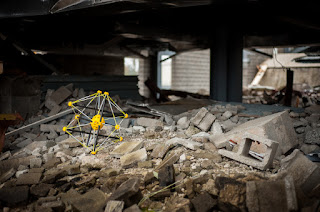Important Innovations Collection: Squishy Robots from UC Berkeley

Squishy, Droppable Robot for Search and Rescue Missions Source: University of California - Berkeley Invented by Engineers at UC Berkeley It's a round, mobile sensor robot that's capable of surviving a drop of 600 feet. The robot is designed for search and rescue missions in disaster areas. It's the invention of engineers at UC Berkeley. For more details, go to Important Innovations Collection: Squishy Robots from UC Berkeley : Disaster Bots Source: Squishy Robotics For Search and Rescue Missions Round, squishy robots capable of being dropped 600 feet and su...


